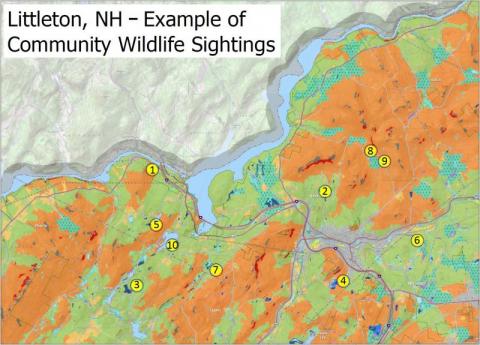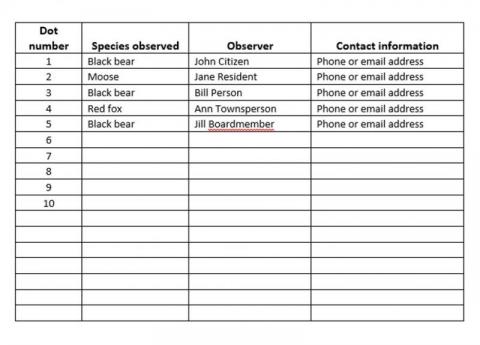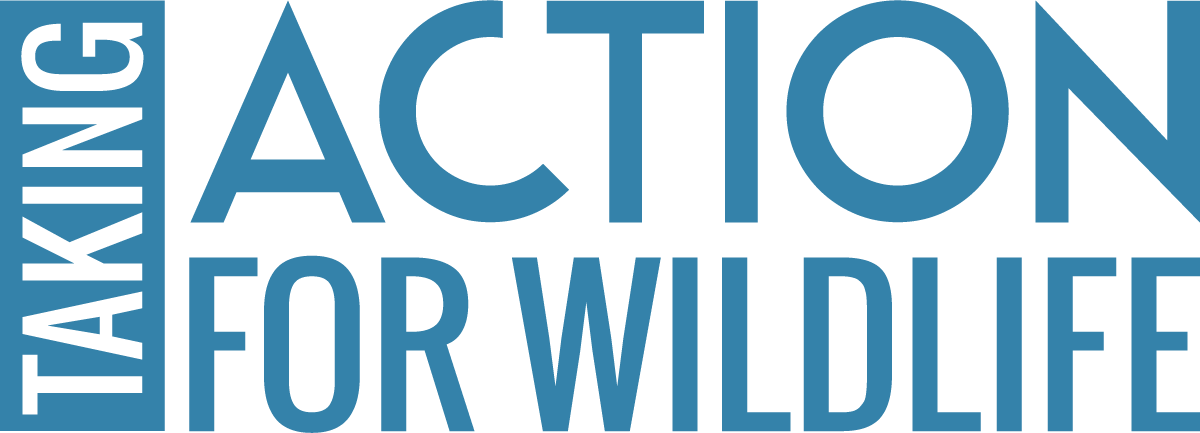This activity is a great way to engage local residents and get an idea of what wildlife species have been observed around town. Communities have used the community wildlife sightings activity at town meeting, voting day, Old Home Days, other local events, and posted the map in the town office waiting area.This activity has generated some good conversations and gets people interested in the work you are doing to protect wildlife and habitats. Communities have also used the list of species observed to incorporate with their local wildlife data (e.g. in their natural resources inventory).

You will need:
- A laminated poster-size copy of the Wildlife Habitats Land Cover map (see example at right), or use an aerial photograph.
- A set of "easy-peel" adhesive dots (so you can remove them easily) - any color/s
- A note pad/clipboard and pen on a string (so that someone doesn't walk off with it!).
How it works:
- A person places a dot on the map, locating an area where they have observed one
 or more wildlife species. They number the dot (e.g the first person to do this uses the number 1. The next person uses number 2, etc.). Each dot should have a unique number on it (see the map example on the right).
or more wildlife species. They number the dot (e.g the first person to do this uses the number 1. The next person uses number 2, etc.). Each dot should have a unique number on it (see the map example on the right). -
On the notepad, each participant writes the number from their sticky dot, and the wildlife species they have observed in that area (see the example at right). You can provide optional columns for contact information (name, phone, email) to follow up with a person if you want to know more about a wildlife sighting or ask if they could share any photos of the species with you.

- As more people participate, the list of wildlife species observed in town grows!
Who can participate:
- Anyone! This is a great way to engage hunters, fisherman, paddlers, hikers, walkers, cyclists and others who observe wildlife as they enjoy the outdoors.

